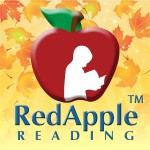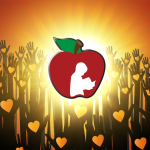A Fresh, Crisp Apple: Red Apple Reading Announces Exciting Site, Lesson Revamps

More sample lessons and easier navigation increase educational program’s offerings, allowing a sneak-peek into fun reading activities for children.

More sample lessons and easier navigation increase educational program’s offerings, allowing a sneak-peek into fun reading activities for children.
Ever wonder why your child’s teacher stresses the importance of practicing the words on those dreaded flash cards in Kindergarten and First Grade? Believe it or not, the top three hundred or so sight words make up about two-thirds of all written matter. Imagine, then, how much easier it will be for your child to read once she masters them!

Founder and president of Red Apple Reading looks to grow initial success of reading skills program with more grade level and subject offerings in the future.
My child is struggling with reading skills and you want me to check his ears? Many parents know that vision is important, but hearing is just as essential to a child’s developing reading skills. A child can appear to hear just fine and still have a specific processing skill weakness that will affect his ability to decode words when reading.
Who isn’t familiar with Jack and Jill tumbling down the hill, or Little Boy Blue falling asleep and letting his animals running amuck, or Little Miss Muffet getting scared by a spider? I remember reading nursery rhymes as a child from a big Mother Goose book that was very old, and is still packed away in the attic somewhere. When my daughters were young, they read from a more modern-looking book with larger print and more colorful illustrations.
These stories have been around for hundreds of years, and while fun to chant (I can still recite many of them from memory), they also serve a very important purpose in your child’s reading development. Read on to find out why these old tales are still so important to share today.
Most parents of preschoolers and kindergarteners have starting thinking about how they can help their children get ready to read. Hopefully by the time your child is 3 or 4 years old, he has had plenty of exposure to books, nursery rhymes, songs, and the letters of the alphabet. Take a look at my last post, Literacy Activities: Toddler to Preschool, if your child has not yet had these experiences.
As your child becomes more comfortable with the sounds that letters make, you can begin to help her connect the letter-sounds into words….
In my last post I discussed how you can get your child’s reading development off to a good start with activities for infants and toddlers. Those budding skills will need to continue being nurtured as your child moves from toddlerhood to preschool.
One of the most important things you can do for your child from the beginning is to read to him. Reading books, even if they are plastic or board books, introduces your child to the wonderful world of reading that will become so critical once he enters school.
I remember the joy I felt when my daughters finally began reading out loud on their own. All of the time spent on the little take-home books from first grade and the flash cards of common sight words had finally paid off. Once the flash cards and phonics books are no longer needed, what do you do when your child can read on his own? Here’s what NOT to do:
Whew! Your child can finally read those library books on her own. Your job helping with reading is finished, right? Not so fast! Many parents fall into the trap of thinking they no longer have to participate once their child learns how to read.